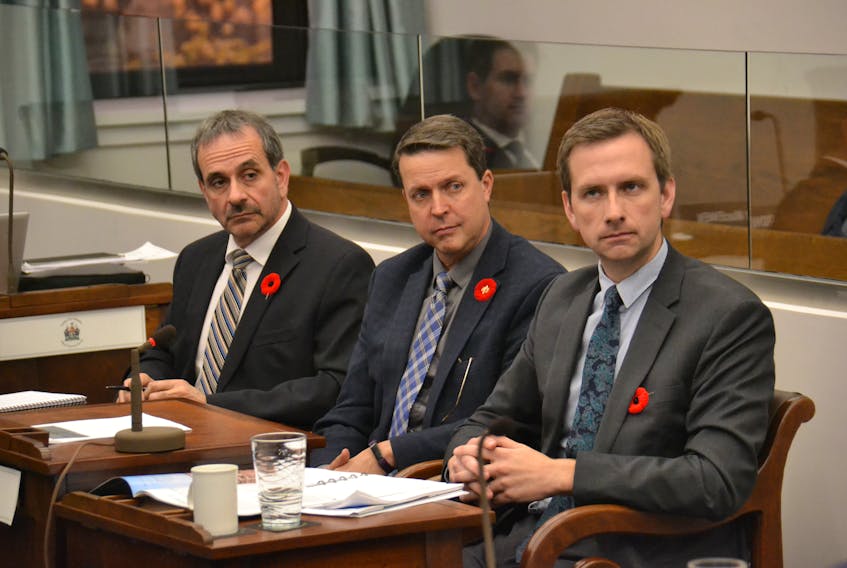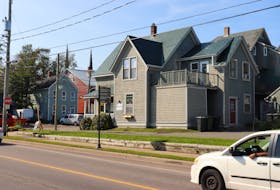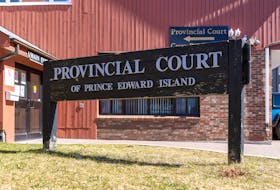CHARLOTTETOWN, P.E.I. — Vanishing coastlines. Damaged lighthouses. Unexpected storm surges. Washed-out roads.
These events may increasingly be in P.E.I.’s present and future, say the two top civil servants responsible for climate mitigation efforts.
Todd Dupuis, executive director of climate change and environment, and Brad Colwill, deputy minister of Environment, Water and Climate Change, told legislators on Thursday that P.E.I. faces increasing challenges due to the present climate crisis.
The two, along with Climate Change Minister Brad Trivers, spoke to the standing committee on natural resources and environmental sustainability about climate adaptation efforts on P.E.I.
Unlike mitigation efforts, which focus on reducing carbon emissions, adaptation efforts focus on tackling the impacts of climate change that are already occurring. The most obvious impacts, Dupuis told the committee, are affecting buildings and roads near coastal areas.
"We are perhaps one of the more vulnerable regions, jurisdictions in the country," Dupuis told the committee.
"(Baring) our friends and neighbours in the north, we're probably one of the highest impacted jurisdictions in the country when it comes to climate change."
Dupuis said he expected a sea level rise of at least three feet in P.E.I. by 2100.

P.E.I. loses, on average, 25 to 30 cm of coastline per year.
Colwill spoke of several examples of mitigation efforts on P.E.I., such as the inter-tidal reef along the causeway and shoreline near Souris. Reefs, made up of Island sandstone, were built last winter at a cost of $115,000. The reefs provide a barrier between waves and the beach.
Several lighthouses are being assessed individually to determine the risk posed to them by the climate crisis. The Cape Bear lighthouse near Murray Harbour was moved back 100 feet from the side of a cliff in 2014, ensuring its survival in the coming decades.
Colwill said property owners near coastal regions have increasingly been requesting free erosion and flood risk assessments, offered by the province.
"It's usually about 50 a year, it's up to 70 this year,” Colwill said.
Dupuis told The Guardian the province does not currently know how many buildings may have to be moved due to the impacts of climate change on coastlines. A consultant has been engaged to determine this.
Questions from MLAs often strayed from the subject of climate mitigation efforts and at times resembled exchanges seen in question period.
Liberal MLA Hal Perry, whose Tignish-Palmer Road district was heavily impacted by post-tropical storm Dorian in September, criticized the province’s response effort to the storm.
“There were some seniors and low-income families that had power out for eight days. If this had happened in January, I would have had a huge concern for them. They would have froze," Perry said.
Perry asked Trivers what he learned from the storm response, as minister responsible for climate change.
“I would say we’re still assessing exactly what we have to do,” Trivers said.
"Within the department of the environment, we haven't talked about any particular actions and what we learned, exactly."
Trivers department was not directly responsible for the province’s response to the storm. The Department of Justice and Public Safety oversaw the Emergency Measures Organization, which directed the response effort.
Liberal MLA Robert Henderson raised the subject of carbon pricing. Henderson suggested expensive mitigation efforts, such as building ‘armour’ reefs to protect coasts, should be funded through carbon taxation.
Prior to Thursday, no P.E.I. MLA has advocated using carbon tax revenues to fund climate adaptation programs.
During the last provincial election, the provincial Liberal and Green parties proposed some level of carbon pricing but suggested the revenue be returned to taxpayers. The Liberals used revenues from a limited carbon tax to lower vehicle registration and offer free driver’s licenses. The Progressive Conservatives were largely silent on the issue in their platform.









